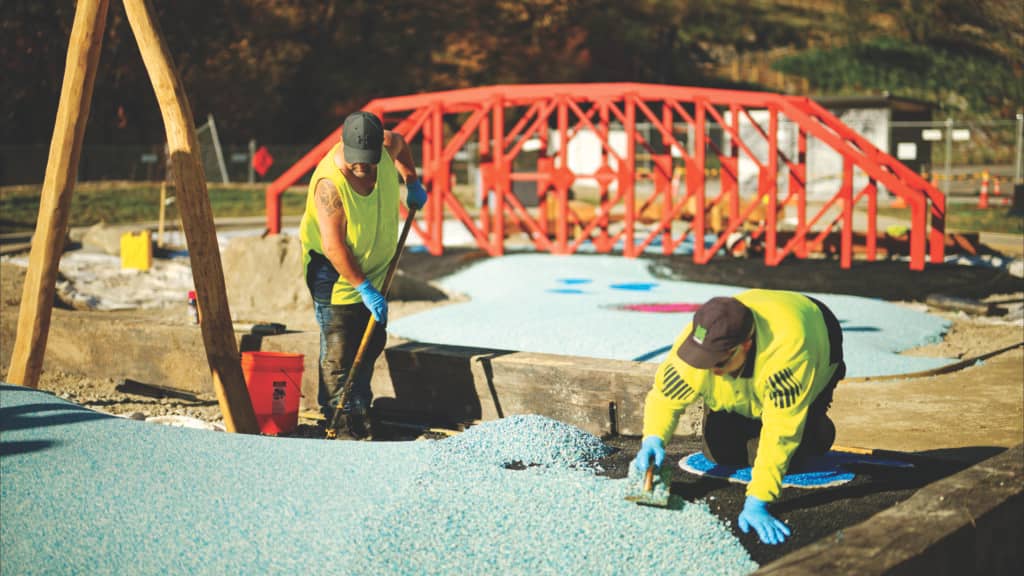When planning your ideal playground, you need to make choices that ensure safety and durability. One popular choice is the wet pour rubber surfacing, a mixture of rubber granules and a binder, which promises not only durability but also long-lasting service.
The Durability of Poured Rubber Surfaces
In general, wet pour rubber surfacing generally last between 10 and 15 years. However, the longevity of your playground surface depends greatly on the quality of installation and ongoing maintenance. Regular upkeep, such as filling low areas and debris removal, plays a significant role in extending your playground surface’s life.
How Sunlight Stabilizers and Granule Choices Impact Longevity
Manufacturing practices can further enhance the lifespan of your playground surface. Adding a stabilizer during production can help reduce the impact of harmful sunlight effects. Moreover, the choice of rubber granule significantly affects your surface’s longevity. Products like Roselle, used in our pour-in-place surfacing, promise a far more durable surface than their EPDM rubber granule counterparts.

The Influence of Resin Binders on Surface
Your choice of resin binder can dramatically impact the lifespan of your playground surface. Aliphatic binders outperform aromatic binders in both aesthetics and durability, promising a playground surface that looks better and lasts longer.
Why Poured Rubber Surfacing is a Great Choice
In conclusion, wet pour rubber surfacing stands out as a durable, long-lasting option for playgrounds. With careful installation, regular maintenance, and well-informed material choices, your poured rubber playground surface can serve your community for many enjoyable years to come.
